Homebrewing for Beginners: A Guide to Making Your First Batch of Beer
Are you interested, in trying your hand at homebrewing? Making beer at home can be a fun and fulfilling pastime that lets you play around with flavors and craft your own brews. It’s easier than you might think especially when armed with the knowledge and gear. With a bit of effort you’ll soon be savoring your homemade beer.
This guide for beginners will take you through the aspects of homebrewing covering the equipment, ingredients and steps involved.
Step 1: Get Your Homebrew Gear Together
While seasoned brewers have an array of equipment at their disposal starting out requires a basic setup for your inaugural batch. Here’s a breakdown of the items you’ll need for homebrewing;
- Brew Kettle (Large Pot); A sizable pot, around 5 gallons in size is essential for boiling your wort ( fermented beer). Stainless steel pots are favored for their robustness and easy maintenance.
- Fermentation Bucket; This food safe plastic vessel is where your wort transforms into beer through fermentation. It often includes an airlock to release carbon dioxide while keeping contaminants out.
- Siphon; Use a siphon to move your beer, between containers without disturbing any sediment present.
- Bottles: You’ll need glass bottles specifically designed for beer to package your finished product.
- Bottle capper: A bottle capper seals your beer bottles with pry-off caps to ensure proper carbonation.
- Thermometer: A thermometer is essential for monitoring the temperature during various stages of the brewing process, as temperature plays a crucial role in proper fermentation.
- Hydrometer: A hydrometer is a tool used to measure the sugar content of your wort, which helps determine the alcohol content of your finished beer.
- Sanitizer: Sanitation is crucial to prevent contamination during the brewing process. You can use a no-rinse sanitizer specifically designed for brewing.
Optional Equipment:
- Carboy: An optional but popular upgrade from a fermentation bucket, carboys are typically glass jugs that allow you to see your beer as it ferments.
- Racking cane: A racking cane helps easily transfer your beer between containers without disturbing the sediment at the bottom.
- Auto-siphon: An auto-siphon simplifies the transfer process by using a pump to move the liquid.
Step 2: Understand the Ingredients
The core ingredients for brewing beer are:
- Grain: Malt is the most common grain used in brewing, and it provides the sugars that yeast ferments to produce alcohol. Base malts, like pale malt or pilsner malt, form the foundation of your beer, while specialty malts can add color, flavor, and body.
- Hops: Hops are the flowers of the Humulus lupulus plant and add bitterness, aroma, and act as a natural preservative to your beer. Different hop varieties offer a wide range of flavor and aroma profiles.
- Yeast: Yeast is a single-celled organism that consumes the sugars in your wort and produces alcohol and carbon dioxide as byproducts. Different yeast strains can influence the flavor, aroma, and alcohol content of your beer.
- Water: Water makes up the majority of your beer, so it’s important to use a clean, chlorine-free source. Depending on your water’s mineral composition, you may need to adjust it to achieve the desired flavor profile for your chosen beer style.
Step 3: The Homebrewing Process
Here’s a simplified breakdown of the homebrewing process:
- Steeping: You’ll first steep your grains in hot water to extract the sugars and flavor. This process is called mashing.
- Boiling: The wort is then brought to a boil, which sterilizes the liquid, inactivates enzymes in the grain, and allows you to add hops for bitterness and aroma.
- Fermentation: The cooled wort is transferred to your fermenter, where yeast is pitched (added). The yeast consumes the sugars and produces alcohol and carbon dioxide, transforming your wort into beer.
- Bottling/Kegging: After fermentation is complete, you can either bottle your beer for secondary fermentation and carbonation or keg it for dispensing.
Step 4: Choosing Your First Homebrew Recipe
As a beginner, it’s wise to start with a simple recipe designed for new brewers. These recipes often use minimal ingredients and focus on clear instructions to ensure a successful first batch. Many homebrew equipment kits come with a starter recipe, or you can find beginner-friendly recipes online and in homebrewing books.
Here are some popular styles for beginner brewers:
- American Pale Ale: A light-bodied and refreshing ale with a moderate hop bitterness and character.
- Blonde Ale: Similar to a pale ale but often lighter in color and hop character, with a focus on malt flavor.
- American Wheat Beer: A light and crisp beer with a wheaty flavor and sometimes citrusy notes.
- Irish Stout: A dark beer with a roasted malt character and a creamy mouthfeel.
Step 5: Brewing Day!
Once you have your equipment, ingredients, and recipe, it’s brewing day! Here’s a basic overview of the brewing process using the extract brewing method, a popular choice for beginners:
- Sanitize everything! This cannot be stressed enough. Sanitation is vital to prevent contamination that could spoil your beer.
- Heat your strike water: Strike water is the hot water used to steep your grains. The specific temperature will depend on your chosen recipe.
- Steep your grains: Steep your specialty grains in a portion of the strike water for the designated time according to your recipe. This extracts color and flavor from the grains.
- Mash in: Raise the temperature of the remaining strike water and add it to your malts to convert the starches into fermentable sugars. Maintain the mash temperature for the recommended time in your recipe.
- Sparge: Sparging involves slowly rinsing the spent grains with hot water to extract any remaining sugars.
- Boil the wort: Transfer the extracted liquid (wort) to your kettle and bring it to a boil. Add hops at specific times during the boil according to your recipe for bitterness, aroma, and flavor.
- Cool the wort: After boiling, quickly chill your wort to a temperature suitable for pitching yeast (usually around 68°F).
- Transfer to fermenter: Transfer the cooled wort to your sanitized fermenter.
- Pitch your yeast: Sprinkle your yeast over the surface of the wort and aerate the wort gently to introduce oxygen, which the yeast needs to reproduce.
- Fermentation: Attach the airlock to your fermenter and let it sit in a cool, dark place for 1-2 weeks, allowing the yeast to ferment the wort into beer.
Step 6: Bottling or Kegging
Once fermentation is complete, you can bottle or keg your beer for carbonation and enjoyment. Bottling is a simpler method for beginners, but kegging offers several advantages, such as easier dispensing and less risk of bottle explosions.
Bottling:
- Priming: Add a priming sugar solution to your beer before bottling. This sugar is food for the yeast, and it carbonates your beer during bottle conditioning.
- Siphon your beer: Carefully siphon your beer into sanitized bottles, leaving enough headspace at the top.
- Cap the bottles: Secure the caps on your bottles using your bottle capper.
- Bottle conditioning: Let your bottles sit undisturbed at room temperature for a few days to allow carbonation to develop. Then, move them to a cool, dark place for storage.
Kegging:
Kegging involves transferring your beer to a pressurized keg, which forces CO2 into the beer for carbonation. Kegging systems require more initial investment but offer greater control over carbonation and serving temperature.
Step 7: Enjoy Your Homebrew!
After a few weeks of bottle conditioning or proper pressurization in a keg, your homemade beer is finally ready to enjoy! Take a sip and appreciate the fruits of your labor. Homebrewing allows you to explore different ingredients, experiment with recipes, and create unique beers tailored to your taste.
Additional Tips for Homebrewing Success:
- Cleanliness is key: Sanitation is essential to prevent contamination throughout the brewing process.
- Start simple: As a beginner, it’s best to choose a beginner-friendly recipe and focus on mastering the basic steps before getting too adventurous.
- Be patient: Beer brewing takes time. Allow each stage of the process to happen without rushing.
- Take notes: Keep track of your brewing process, including your ingredients, methods, and observations. This will help you learn from your experiences and improve your future batches.
- Have fun! Homebrewing is a rewarding hobby. Experiment, enjoy the process, and celebrate your achievements.
With a little practice and these basic guidelines, you can be well on your way to becoming a skilled homebrewer, crafting delicious and unique beers to share with friends and family.
Beyond the Basics
Once you’ve mastered the fundamentals and brewed a few successful batches, you can delve deeper into the world of homebrewing. Here are some areas to explore:
- Grain Brewing: While extract brewing is a great starting point, many brewers eventually graduate to all-grain brewing. This method involves steeping crushed grains in hot water to convert starches into sugars, offering more control over the brewing process and flavor profile.
- Advanced Techniques: As your skills progress, you can explore advanced techniques like dry hopping (adding hops during fermentation for enhanced aroma), secondary fermentation (adding fruit or spices for unique flavors), and sour beer brewing (utilizing specific bacteria strains for tart and funky flavors).
- Recipe Formulation: With experience, you can create your own custom beer recipes, allowing you to truly personalize your brews.
Resources for Homebrewers
The homebrewing community is a wealth of knowledge and support. Here are some resources to help you on your brewing journey:
- Homebrew Shops: Local homebrew shops offer equipment, ingredients, and expert advice.
- Homebrewing Clubs: Joining a homebrewing club allows you to connect with other brewers, share tips and experiences, and participate in brewing competitions.
- Online Forums and Websites: Numerous online resources offer recipes, brewing guides, troubleshooting tips, and discussions with other homebrewers.
Homebrewing is a fun and rewarding hobby that allows you to unleash your creativity and enjoy the satisfaction of crafting your own beer. With the right information and a willingness to learn, you can be brewing delicious beers in no time. So, grab your equipment, choose a recipe, and get started on your homebrewing adventure!



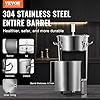



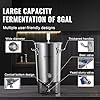








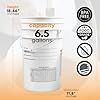
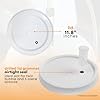
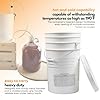



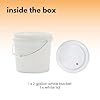
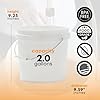
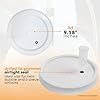
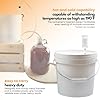








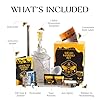














Leave a Reply